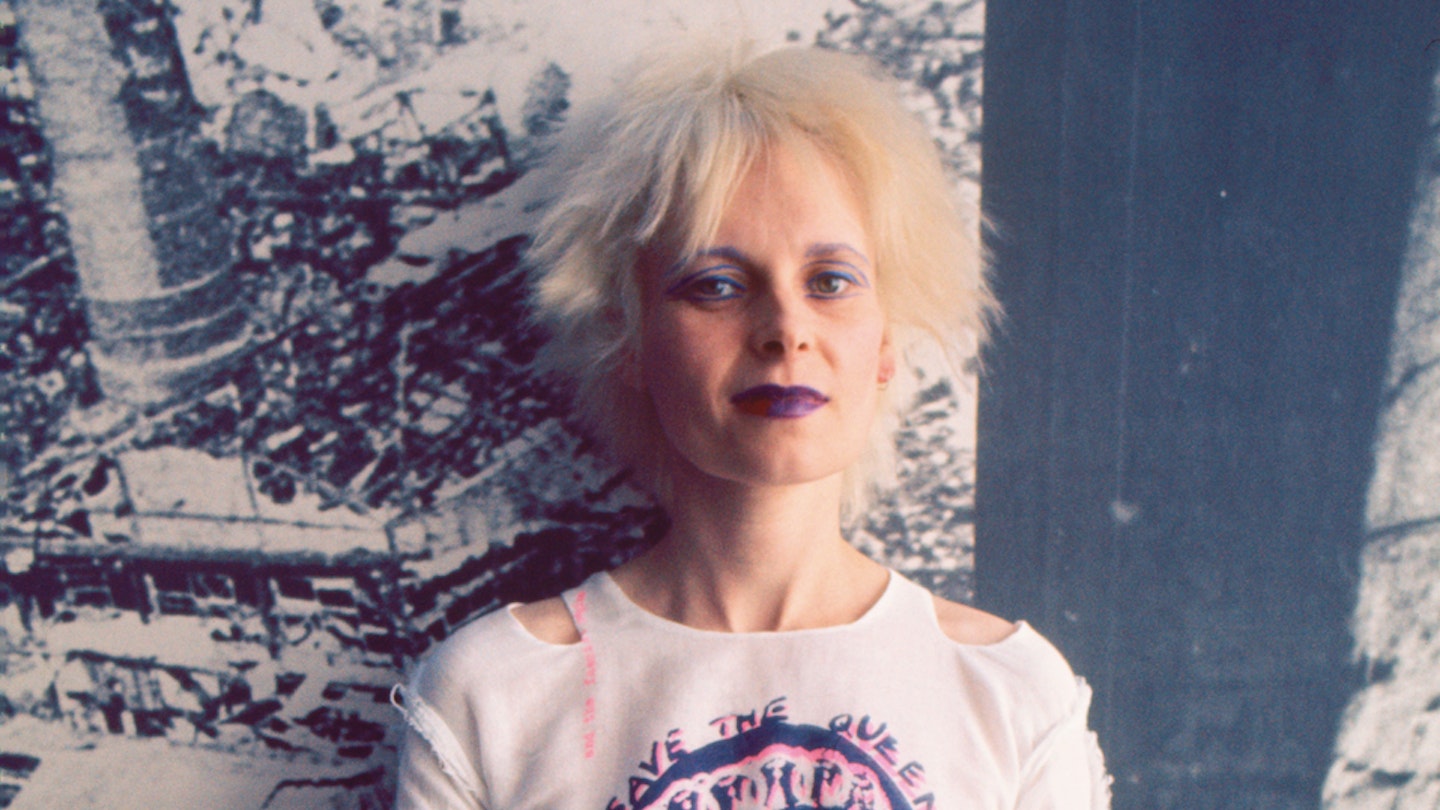Dame Vivienne Westwood, the trailblazing designer whose influence extended far beyond fashion, has died in London. She was 81. She died ‘peacefully and surrounded by her family’ representatives said in a statement. It continued: ‘Vivienne continued to do the things she loved, up until the last moment, designing, working on her art, writing her book, and changing the world for the better. She led an amazing life. Her innovation and impact over the last 6o years has been immense and will continue into the future’.
An iconoclast, a visionary, a force of nature, Westwood was one-of-a-kind. She was the anarchist who became a national treasure, the scrappy instinctive talent who became a multi-million pound empire, the provocateur who only got bolder as she got older. And as for the clothes? They had beauty, brains and balls.
Punk
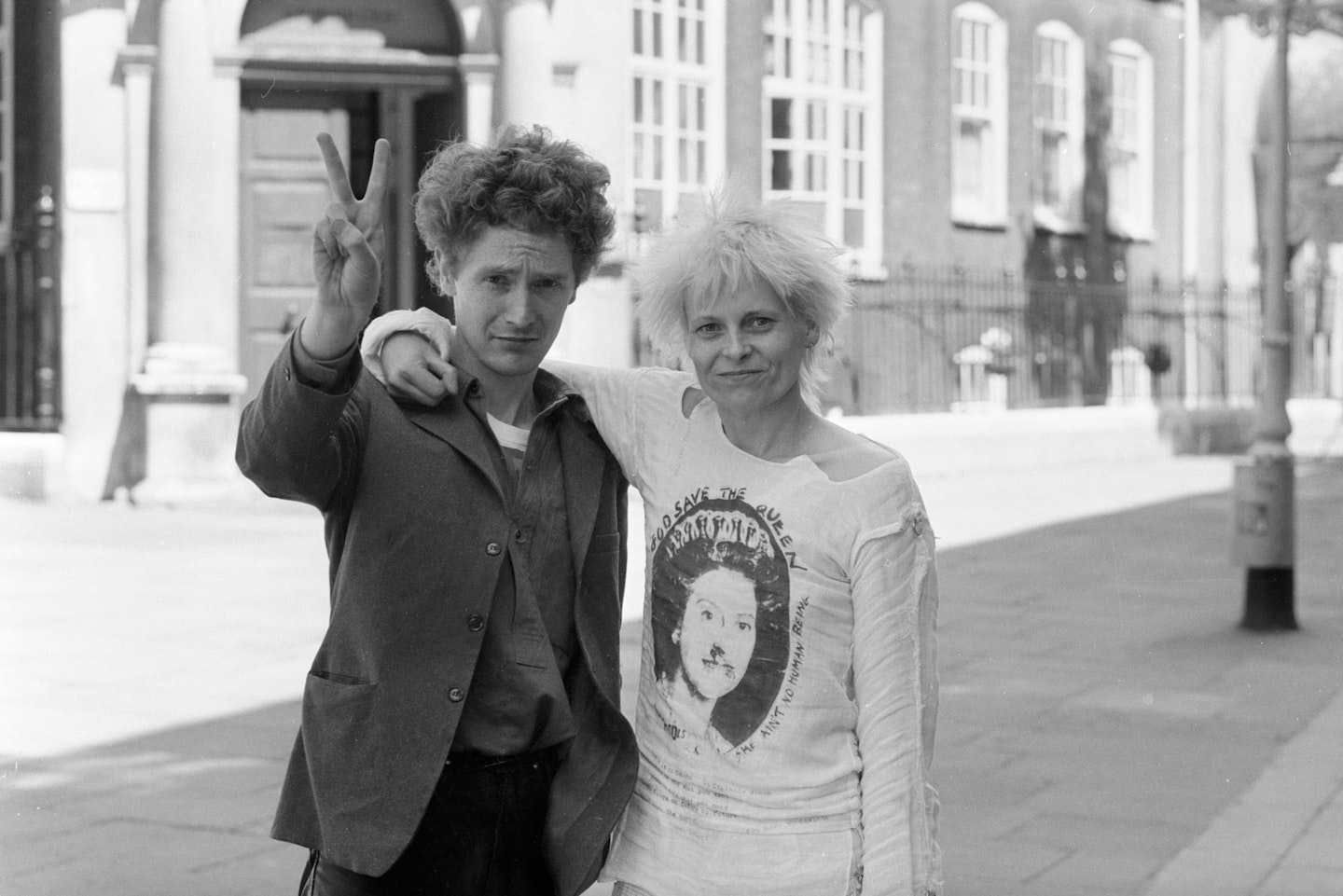
Born in the Derbyshire village of Tintwistle in 1941, she moved to London in 1957 where she attended art school for one term. It was in the ’60s, while working as a primary school teacher and separated from her first husband, that she met Malcolm McLaren. Together, the pair ignited a creative fire and in 1971 opened their King’s Road boutique. Rebranded and renamed SEX by 1974, it became the crucible of London’s emerging punk scene – early patrons included the Sex Pistols, whom McLaren managed – and Westwood was there in the middle of it.
Pirates and platforms
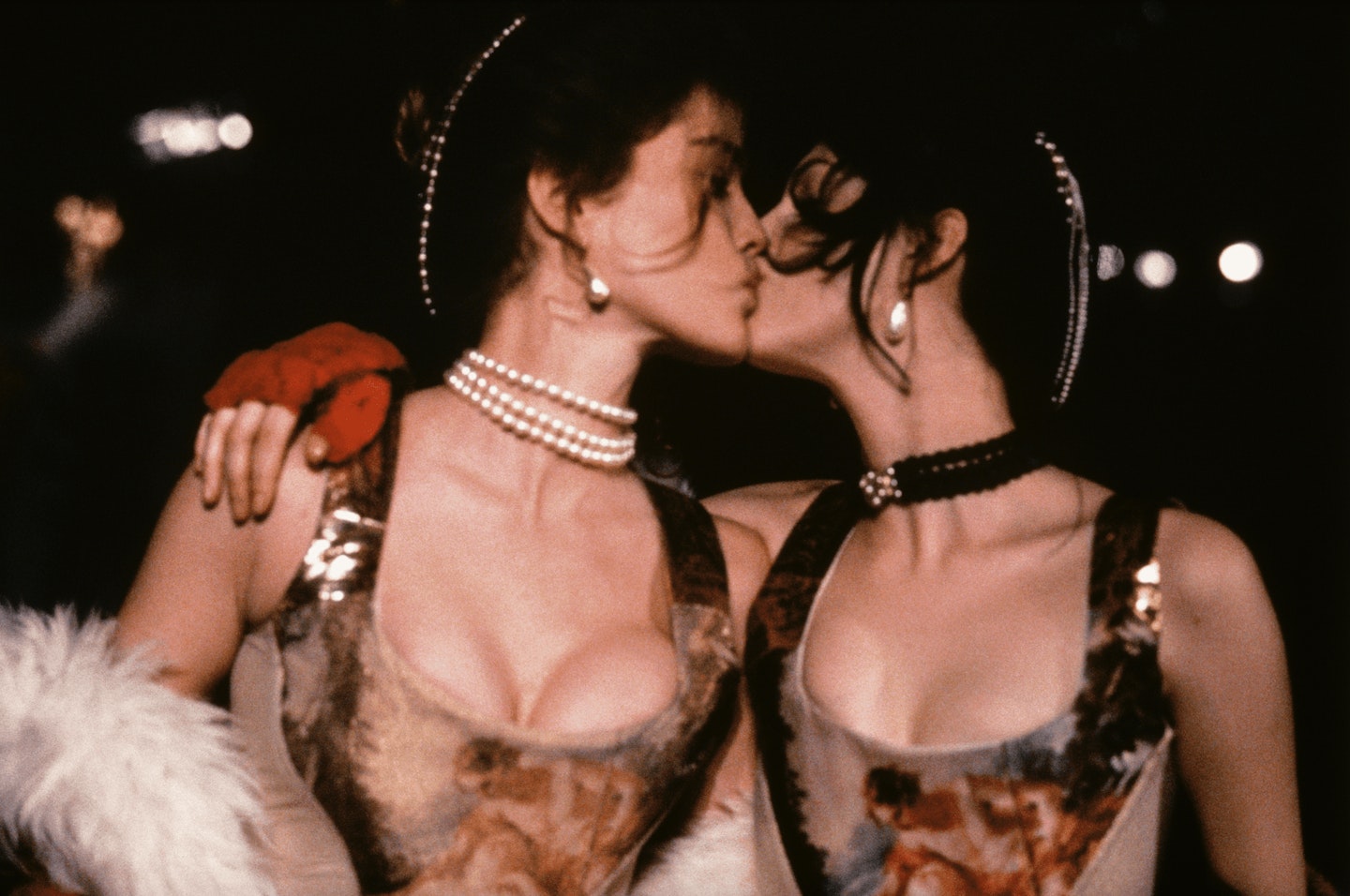
Even as Westwood’s designs evolved, to many she was still known as the ‘Priestess of Punk’. Perhaps, it was because even with the world’s biggest supermodels walking in her shows, even when she was a household name (and a Dame at that) her work continued to exude a provocative, anarchic spirit – as did she (famously going knickerless to pick up her OBE). For a woman who was always charging forward, she also luxuriated in references from the past. For her first catwalk show, in 1981, she presented her famous Pirate collection which drew on a bygone era of buccanners and dandies. She was in her New Romantic phase. There followed other iconic collections that drew from the past, for instance 1990’s Portrait collection with its corsets featuring Boucher images and Anglomania’s clan tartans (and health-hazard-high platforms).
Protest
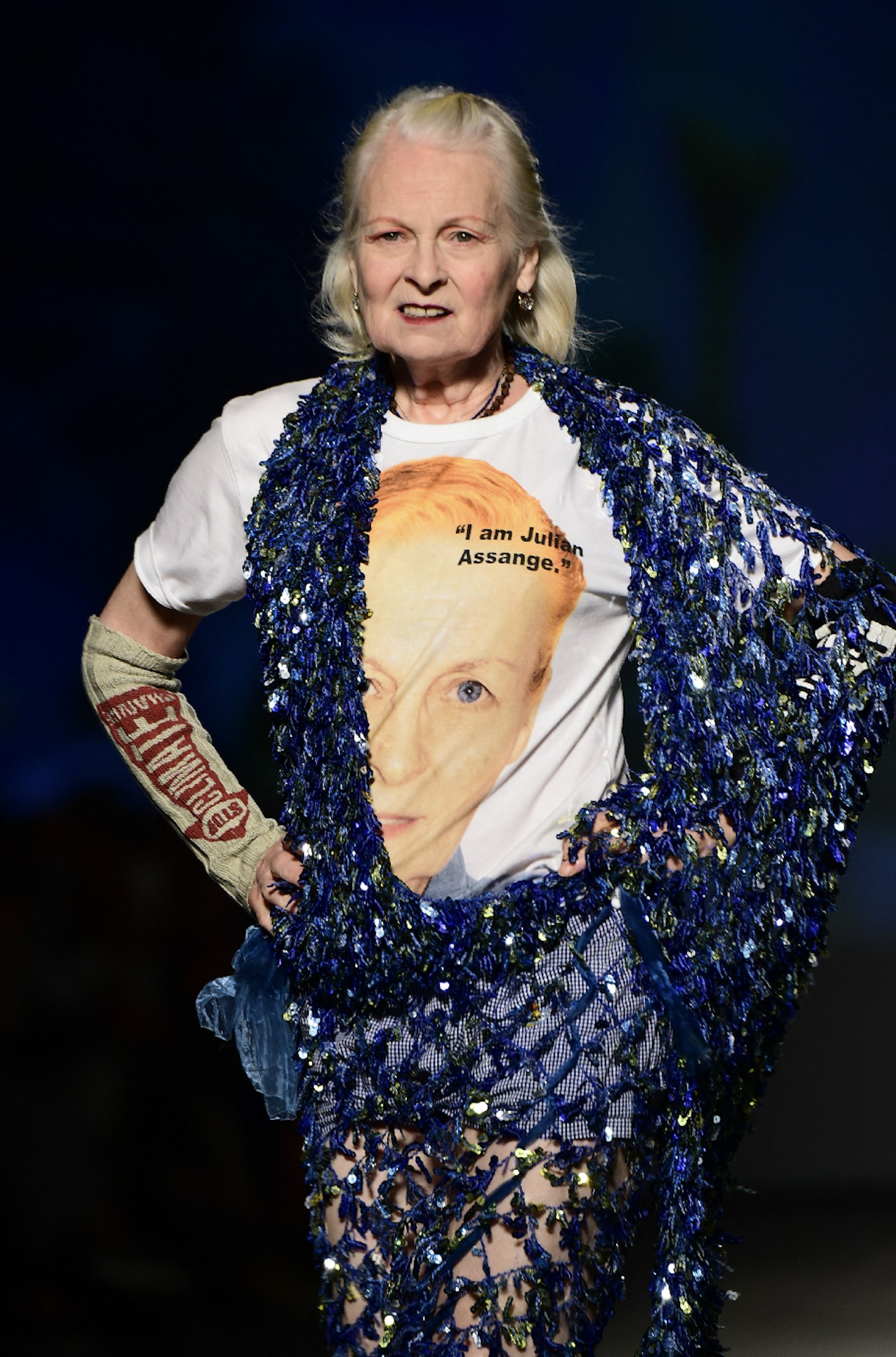
Long before it became fashionable to talk sustainability, Westwood was banging that drum. By the 2000s, she had become outspoken about environmental issues (even when they undermined her own business interests; she loved to encourage people to buy less). In 2015 Westwood drove a tank to David Cameron’s constituency house to protest against fracking, petitioned the British government to ban fur, and frequently used the catwalk as a stage for protest. She was also a vocal supporter of Julian Assange. In 2020, she was suspended outside the Old Bailey in a cage (‘I am the canary in the coal mine’) in protest over the WikiLeaks’ founder’s extradition.
Pammy
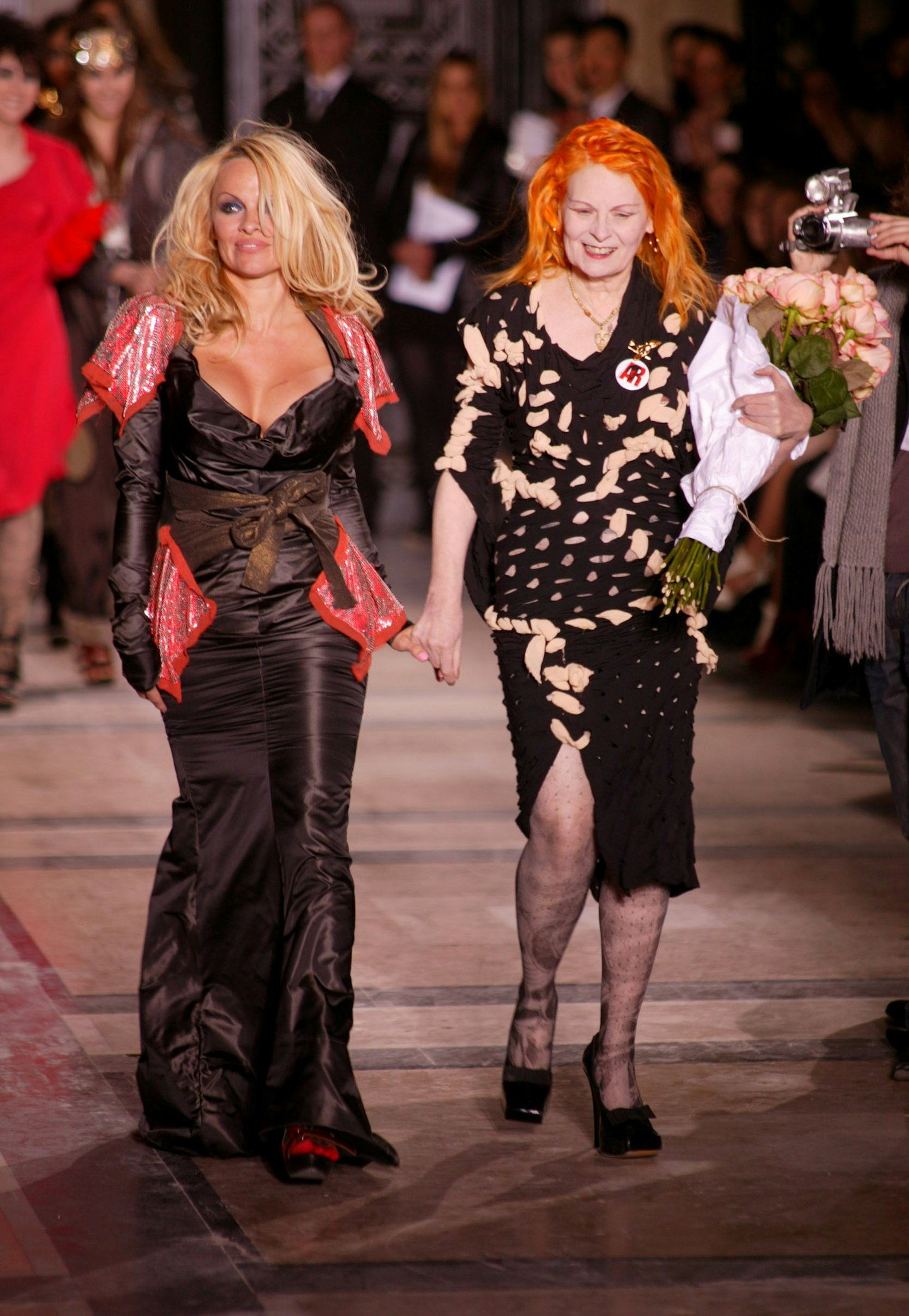
Westwood was one of the first high-fashion designers to embrace Pamela Anderson. And as much as she loved pop culture’s leading ladies – not just Pammy, but Jerry Hall, Tracey Emin, Kate Moss, Zendaya – they loved her right back. And they loved her clothes, too: because of the most punkish things of all was the generosity with which she designed. Her clothes embraced women, they didn’t fight them. Westwood saved that for the issues that really mattered.
